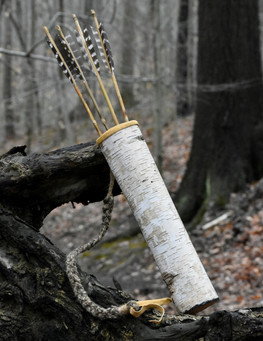ARCHERY

Almost every culture in the world has a special bow design in their history. They are crafted in local materials and designed in form and function to fit the environment in which they are made. The production of an authentic replica requires using the correct natural materials and going through the traditional process. This includes carefully selecting bow staves with a focus on environmental preservation and the continued health of the forest. The wood is seasoned first and then slowly tillered and tuned into a functional bow, in addition to historical accuracy.
Natural bowmaking has had a wonderful resurgence in recent years. At Occpaleo, we are focusing on bringing ancient archery back to the present. We believe that most archers want to get a feel for the past, and that is why they are practicing archery in the first place. After close examination of original ethnographic and archaeological bow artifacts, it is possible to bring back some of that experience if the same materials and techniques are used.
.png)
The stave used in an authentic replica not only needs to be the right species, but also needs to be tillered, or tuned to fit the original design. The characteristics of the wood, and the use environment often dictates whether a bow is long or short, wide or thin, and how powerful the bow needs to be.
The bow and arrow must work together perfectly, and the arrow is actually more critical in this compound system. Just as traditional cultures all had their own bow design, the arrow was also crafted to fit the local landscape, made from the materials available there. A proper arrow is in tune with the bow and the use environment.
Quivers are a wonderful way to bring a traditional touch back to modern archery. When natural materials are used again in archery equipment, it celebrates ancestral cultures as well as our shared prehistory.

This model based on finds at Hidden House archaeology site, AZ

Examination of historic archery equipment to get accurate details for study, and to educate the field on all the wonderful ways that bows are more than bent sticks.

To complete the traditional/primitive archery set, we love to make quivers of natural materials to complement the bows and arrows. This model was inspired by a museum quiver in birch bark.

This model based on finds at Hidden House archaeology site, AZ








